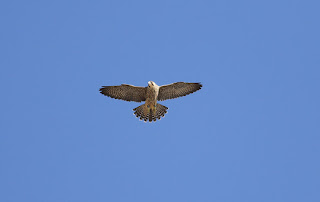A Robin-like bird jumping on the side of a bicycle track in central Sweden is usually most likely to be…just a Robin. However this time of the year (late August - early September) it isn´t at all rare to find a
Bluethroat. Carl von Linné gave it the scientific name
Luscinia svecica, back in 1758, meaning "the Swedish Nightingale". It still fills me with a very old-fashioned nationalistic pride when telling people this!



























































































































